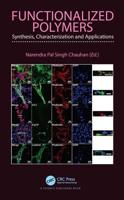Publisher's Synopsis
Now updated-the current state of development of modern surface science
Since the publication of the first edition of this book, molecular surface chemistry and catalysis science have developed rapidly and expanded into fields where atomic scale and molecular information were previously not available. This revised edition of Introduction to Surface Chemistry and Catalysis reflects this increase of information in virtually every chapter. It emphasizes the modern concepts of surface chemistry and catalysis uncovered by breakthroughs in molecular-level studies of surfaces over the past three decades while serving as a reference source for data and concepts related to properties of surfaces and interfaces.
The book opens with a brief history of the evolution of surface chemistry and reviews the nature of various surfaces and interfaces encountered in everyday life. New research in two crucial areas-nanomaterials and polymer and biopolymer interfaces-is emphasized, while important applications in tribology and catalysis, producing chemicals and fuels with high turnover and selectivity, are addressed. The basic concepts surrounding various properties of surfaces such as structure, thermodynamics, dynamics, electrical properties, and surface chemical bonds are presented. The techniques of atomic and molecular scale studies of surfaces are listed with references to up-to-date review papers. For advanced readers, this book covers recent developments in in-situ surface analysis such as high- pressure scanning tunneling microscopy, ambient pressure X-ray photoelectron spectroscopy, and sum frequency generation vibrational spectroscopy (SFG). Tables listing surface structures and data summarizing the kinetics of catalytic reactions over metal surfaces are also included.
New to this edition:
-
A discussion of new physical and chemical properties of nanoparticles
-
Ways to utilize new surface science techniques to study properties of polymers, reaction intermediates, and mobility of atoms and molecules at surfaces
-
Molecular-level studies on the origin of the selectivity for several catalytic reactions
-
A microscopic understanding of mechanical properties of surfaces
-
Updated tables of experimental data
-
A new chapter on "soft" surfaces, polymers, and biointerfaces
Introduction to Surface Chemistry and Catalysis serves as a textbook for undergraduate and graduate students taking advanced courses in physics, chemistry, engineering, and materials science, as well as researchers in surface science, catalysis science, and their applications.










